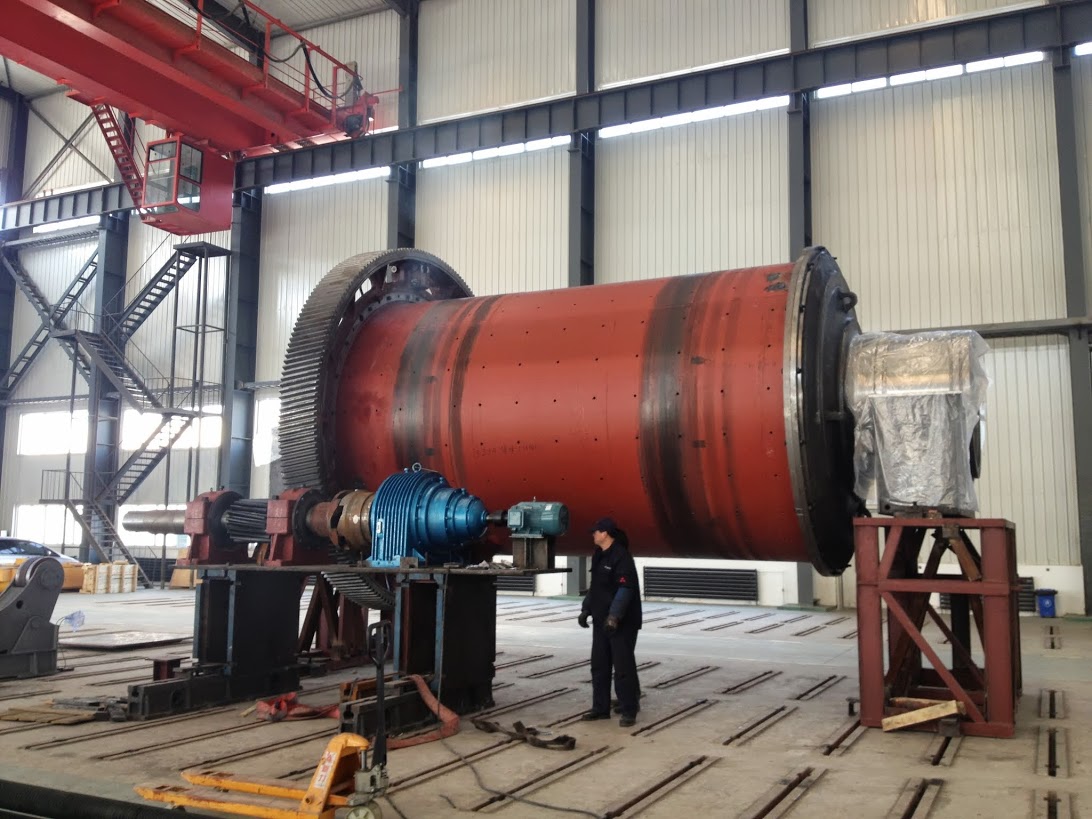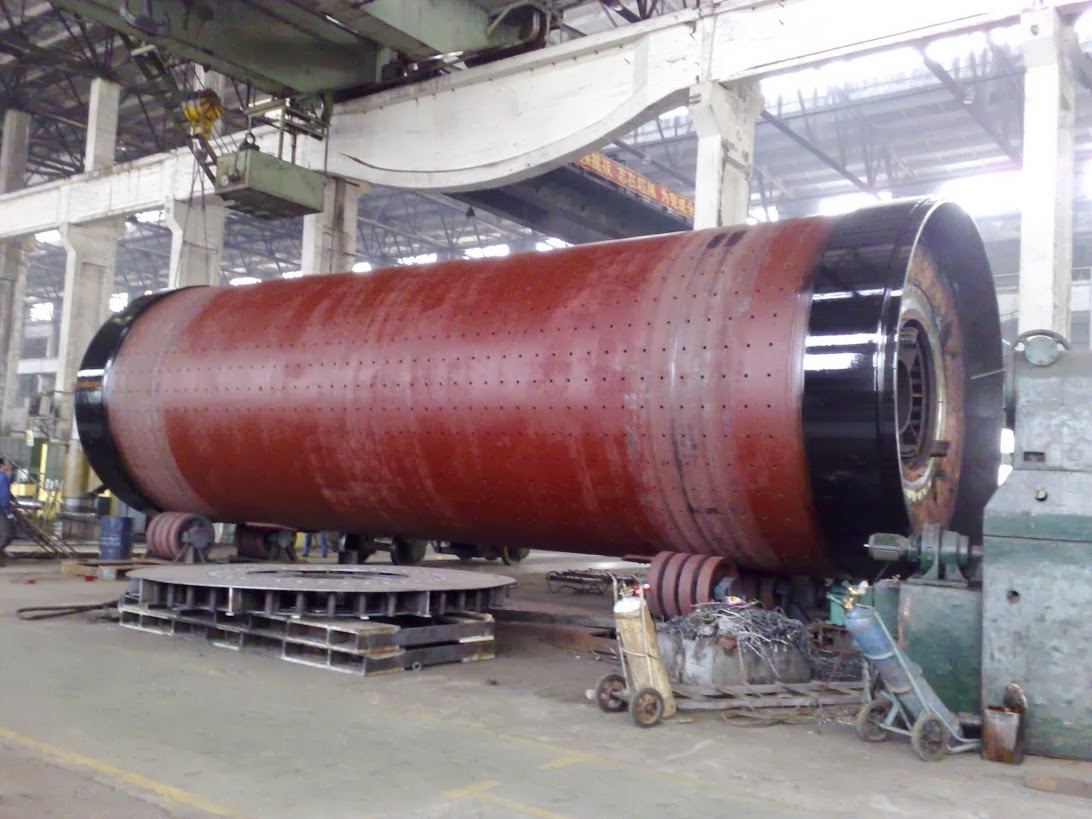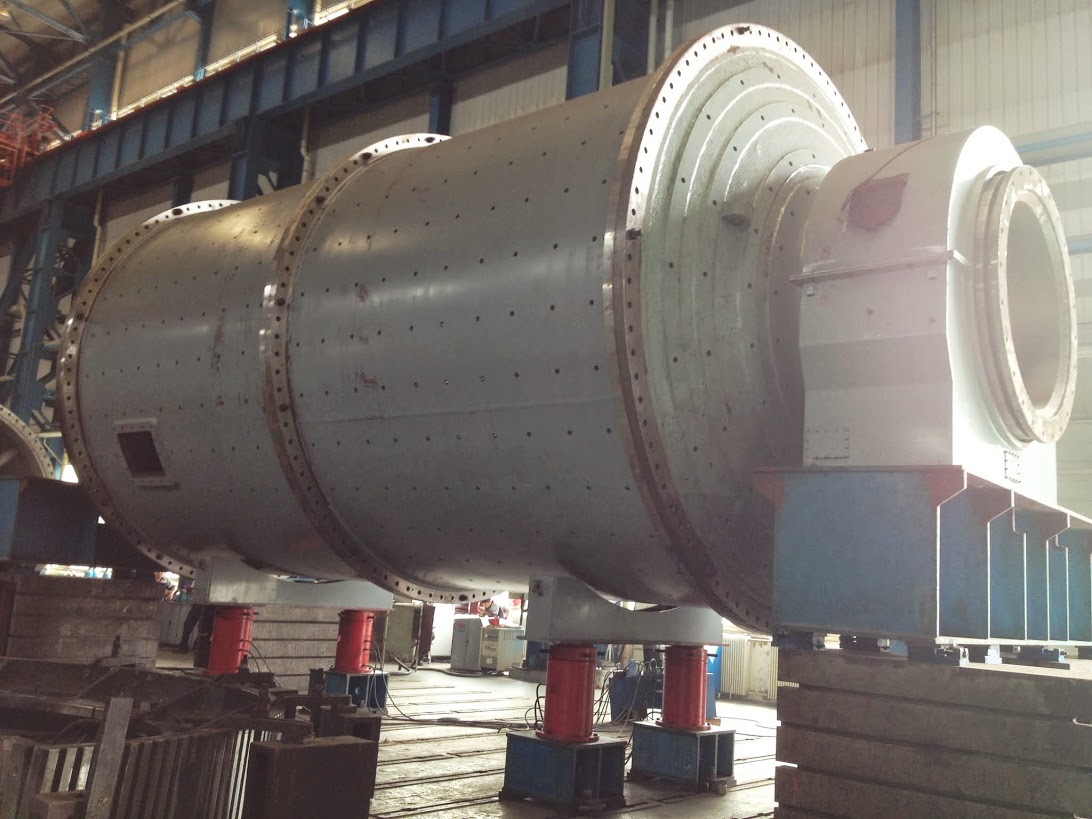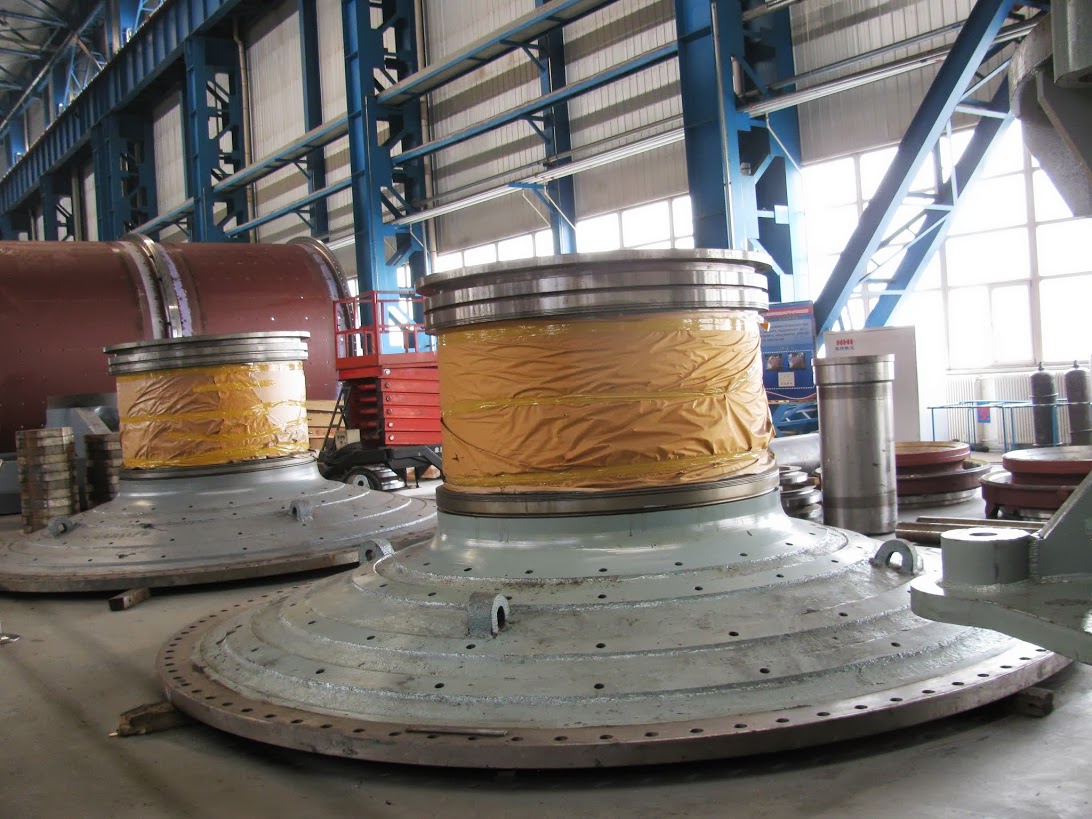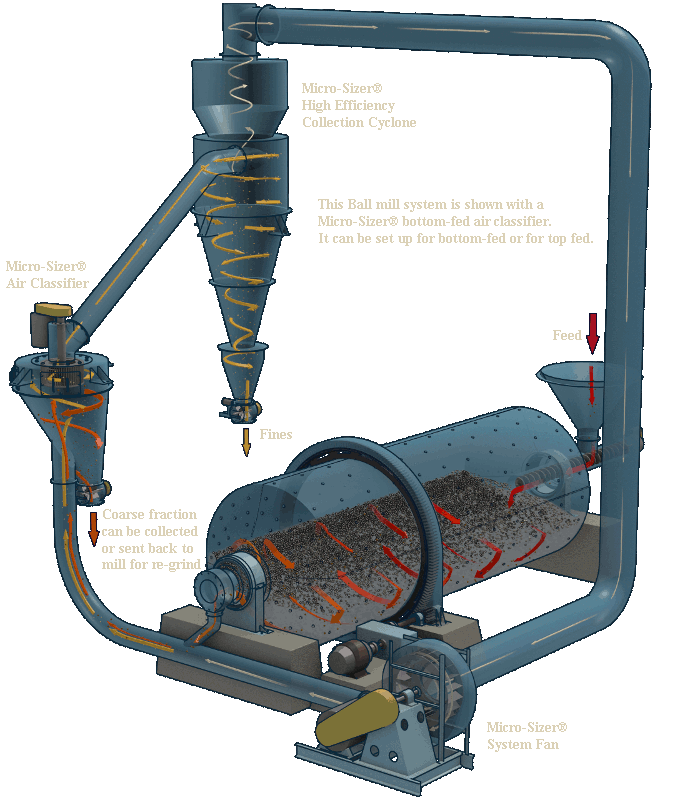 |
A Ball Mill grinds material by rotating a cylinder with steel or ceramic grinding balls, causing the balls to fall back into the cylinder and onto the material to be ground. Ball Mills have been successfully run at speeds between 60 and 90 percent of critical speed. However, most Ball Mills operate at speeds between 65 and 75 percent of critical speed. The larger the diameter, the slower the rotation. If the peripheral speed of the mill is too great, it begins to act like a centrifuge and the balls do not fall back, but stay on the perimeter of the mill.
A Ball Mill is normally used to produce finely sized products that range from 35 mesh to 10 microns. As a general rule, Ball Mill feed should not be coarser then 80% passing 1/4" on hard ores and 80% passing 1" on soft ores (cement clinker). To achieve a reasonable efficiency with the Ball Mill, it must be operated in a closed system, with oversize material continuously being re-circulated back into the mill to be reduced. When used in conjunction with the MICRO-SIZER® air classifier, the grinding efficiency is greatly increased due to the extremely efficient removal of fine particles. These fine particles will reduce your grinding ability and efficiency therefore, removal of these particles is necessary to increase production. |

